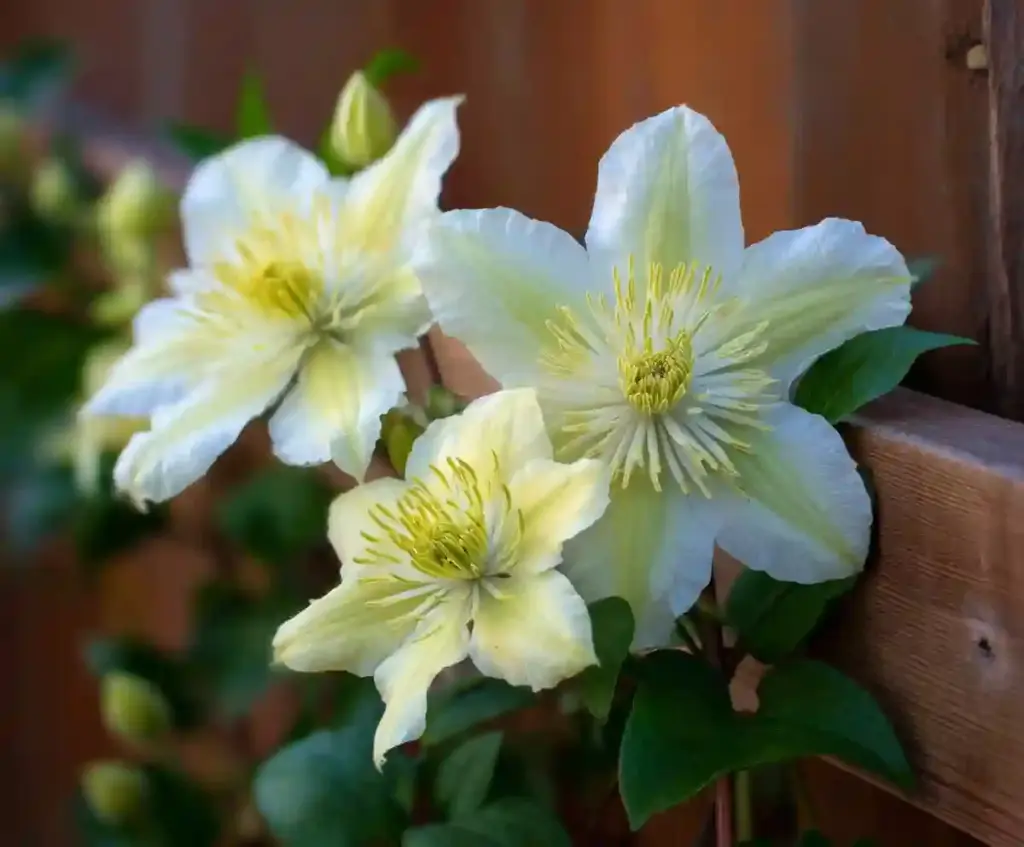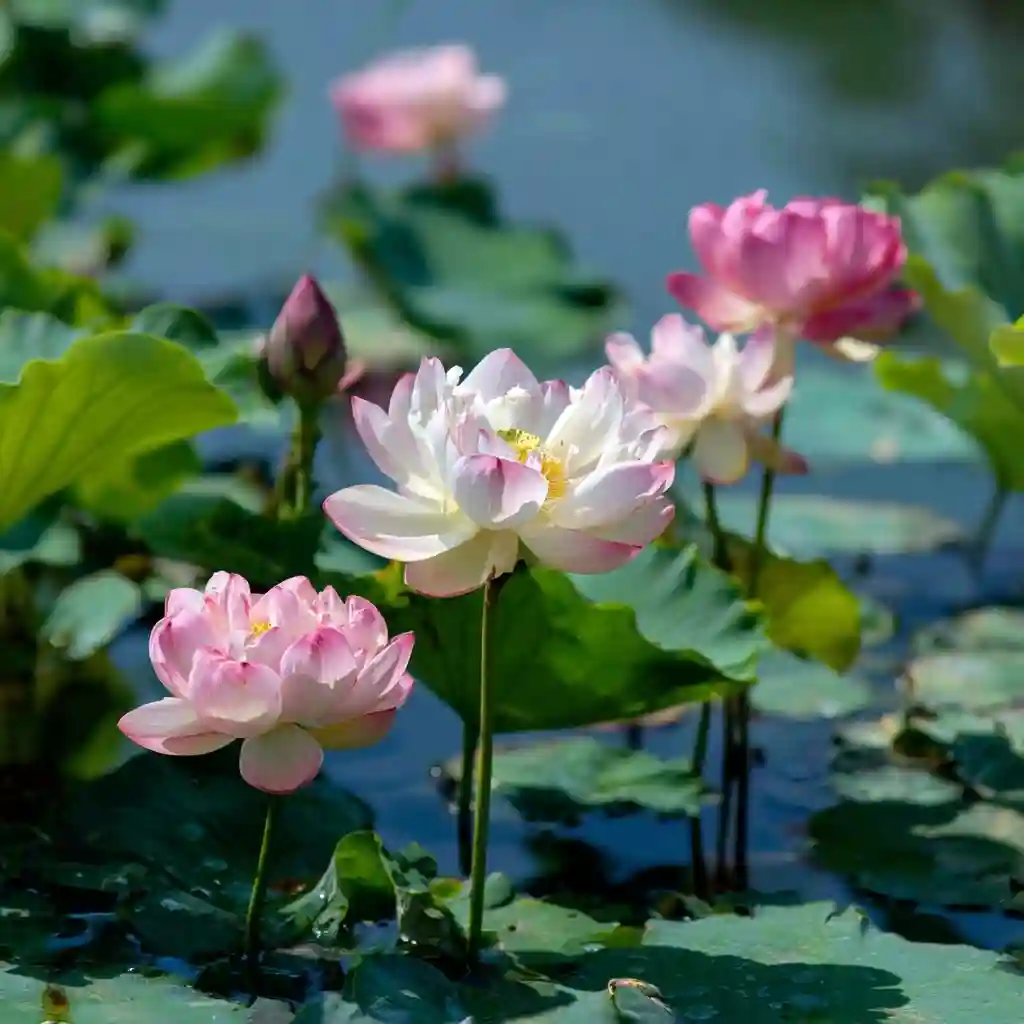Lotus flowers are one of the most captivating aquatic plants, known for their stunning blooms that rise proudly above the water. Unlike water lilies, which rest on the surface, lotus plants push both their leaves and blossoms skyward—offering a visual spectacle that blends serenity with elegance. Botanically classified as Nelumbo spp., these aquatic perennials are native to Asia and North America and thrive in warm, shallow water gardens.
Though often mistaken for their water lily cousins, lotus flowers differ significantly in structure, growth habits, and cultural needs. Hardy in USDA zones 4a through 10b, they enter dormancy in winter and return each spring with vibrant foliage and blooms. Whether grown in a pond or container, they provide not just beauty but also cultural significance and edible parts—making them as practical as they are ornamental.
Table of Contents
Lotus Plant Care
Caring for lotus flowers requires attention to a few key growing conditions, but once established, they flourish with minimal effort. These plants crave sunlight, consistently wet soil, and occasional feeding to bloom their best. Whether in a backyard pond or container setup, replicating their natural environment is the secret to success.
Here are the essential care elements to keep in mind:
- Sunlight: At least six hours of direct sun daily is non-negotiable. Insufficient light often leads to lush leaves but no flowers.
- Water: Lotus roots must always remain in moist soil. Avoid submerging young shoots completely during early growth.
- Soil: Rich, loamy or clay-based soil works best. Use containers without drainage holes to hold moisture.
- Fertilizer: Every 20 days, apply a balanced, water-soluble formula (like 20-10-20) during the growing season for container-grown plants.
- Containment: In natural ponds, lotus flowers can become invasive. To prevent unwanted spread, always plant in submerged containers.
⚠️ Note: Some lotus cultivars are considered invasive in certain U.S. regions. Before planting outdoors, check with your local extension office.
Care Requirements by Category
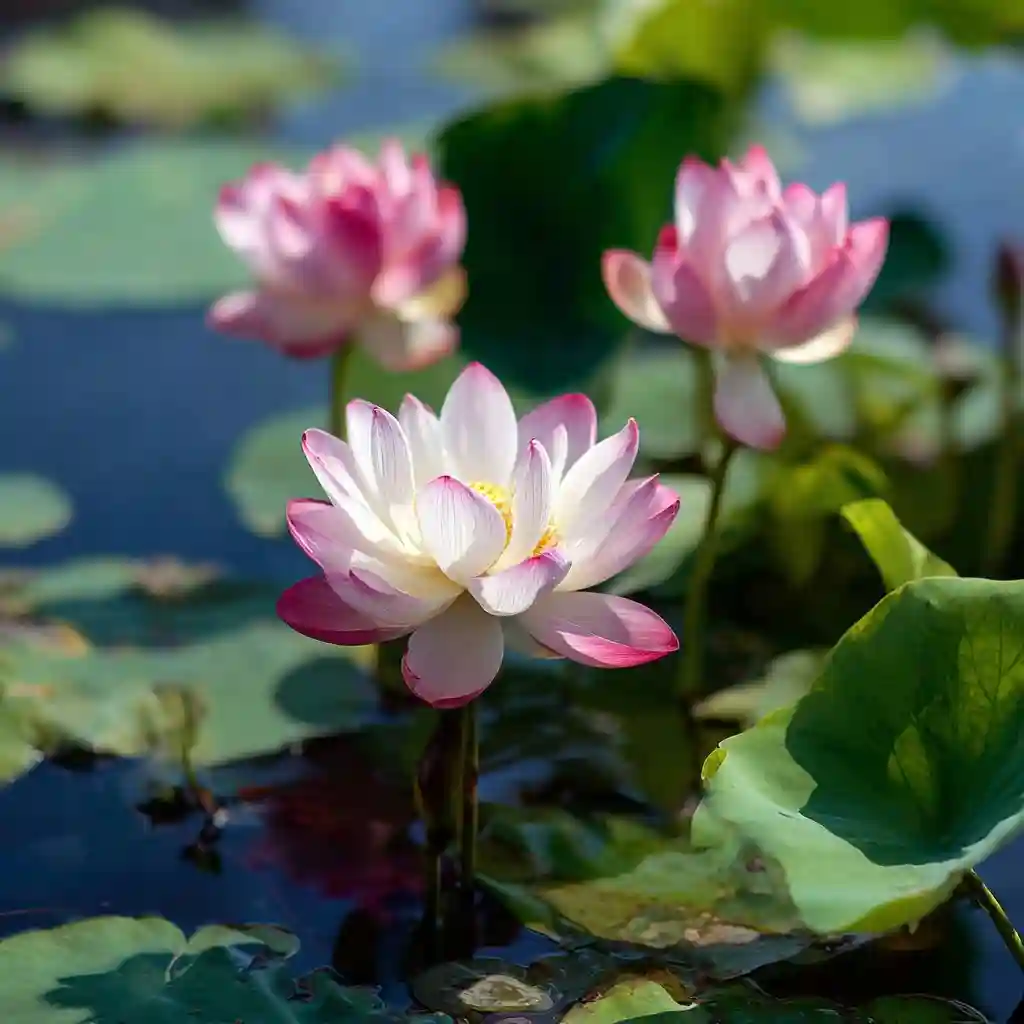
🌞 Light
Lotus flowers are sun worshippers. To produce abundant foliage and consistent blooms, they need at least six hours of direct sunlight daily. Less light can result in leggy growth and disappointing flowering. Place containers in the sunniest part of your pond or patio to keep them thriving.
🌱 Soil
The best medium for lotus cultivation is fertile, silt loam or clay, mimicking the muddy environments they naturally grow in. For container gardening, mix pine bark and topsoil or opt for an aquatic plant medium. This blend supports root development while anchoring the plant securely.
Avoid regular potting soil—it’s too loose and can cloud the water or cause root rot.
💧 Water
Since they’re aquatic, lotus flowers demand consistently wet conditions. However, there’s a balance to strike—never submerge young shoots during early spring growth. Keep the soil saturated but avoid standing water on top until leaves rise above the surface.
During dormancy, ensure that your water source doesn’t freeze solid. This is especially important in USDA zones 4a–6b, where freeze-thaw cycles can damage rhizomes.
🌡️ Temperature & Humidity
While hardy to cold, lotus flowers prefer warm days and nights for optimal performance. Most varieties can survive temperatures below freezing as long as the roots remain wet and insulated. Submerge pots deeper or use water heaters or circulation pumps in extreme cold.
🌿 Fertilizer
Natural ponds provide plenty of organic nutrients, but container-grown lotus flowers need regular feeding. Every 20 days, apply a complete water-soluble fertilizer with a 20-10-20 NPK ratio. Avoid overfertilizing—too much can burn roots or promote leaf growth over blooms.
Types of Lotus Plants
When choosing lotus flowers for your garden or pond, you’ll find a beautiful variety of species and hybrids. While all share the classic upright growth and radiant blooms, different types vary in size, color, and cold tolerance.
🧬 A. Species
1. Nelumbo lutea (American Lotus)
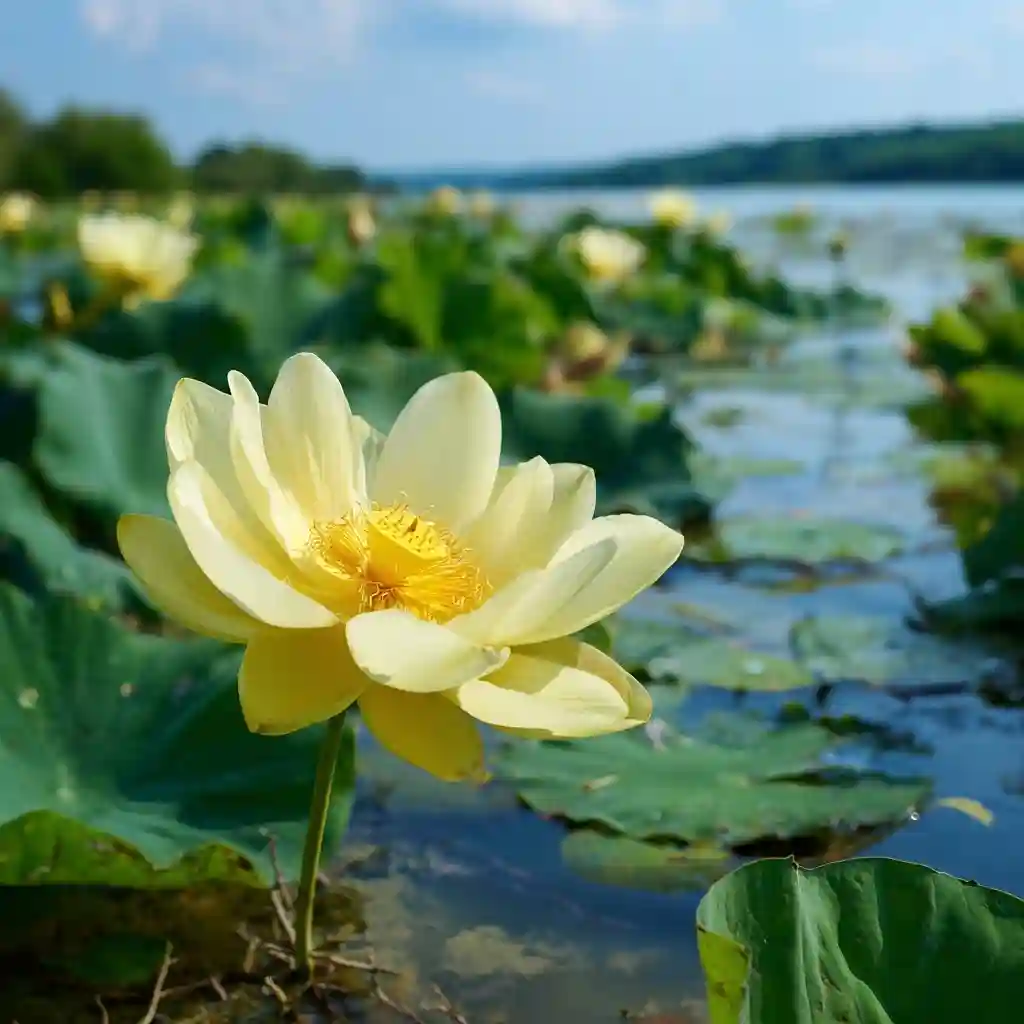
Native to North America, this species produces creamy white to pale yellow flowers that can span up to 10 inches across. It’s commonly found in ponds and lakes from Canada down to Florida. Its large, circular leaves and sturdy stems make it ideal for naturalistic water gardens.
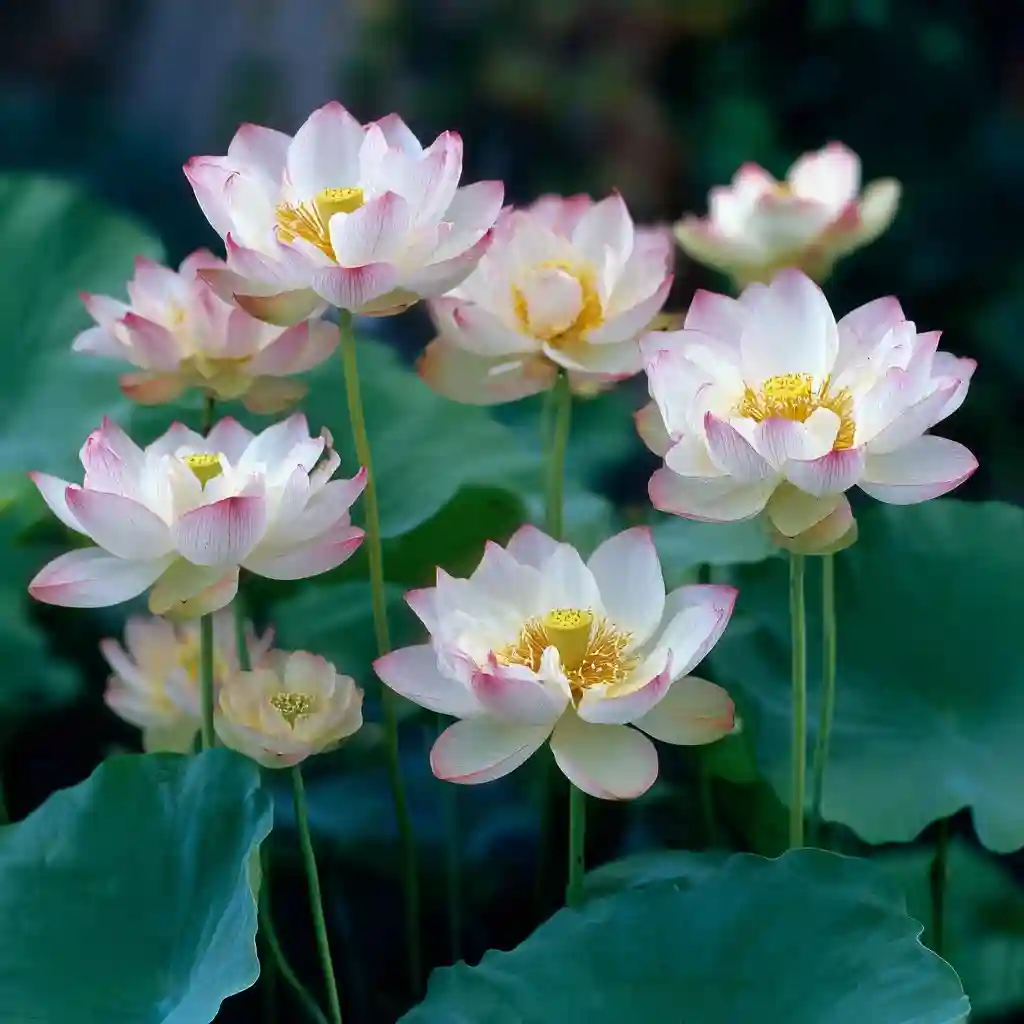
2. Nelumbo nucifera (Sacred Lotus / Asian Lotus)
This tropical species features pink or white flowers and is revered in many cultures for its spiritual symbolism. All parts of the plant are edible, and it’s widely cultivated from Iran to Australia. N. nucifera tends to have more vibrant colors and is often used in ornamental and edible gardens alike.
🌸 B. Popular Cultivars
Each cultivar of lotus flowers brings unique flair to water gardens. Some are miniature, perfect for patio pots, while others tower over the water with bold blooms:
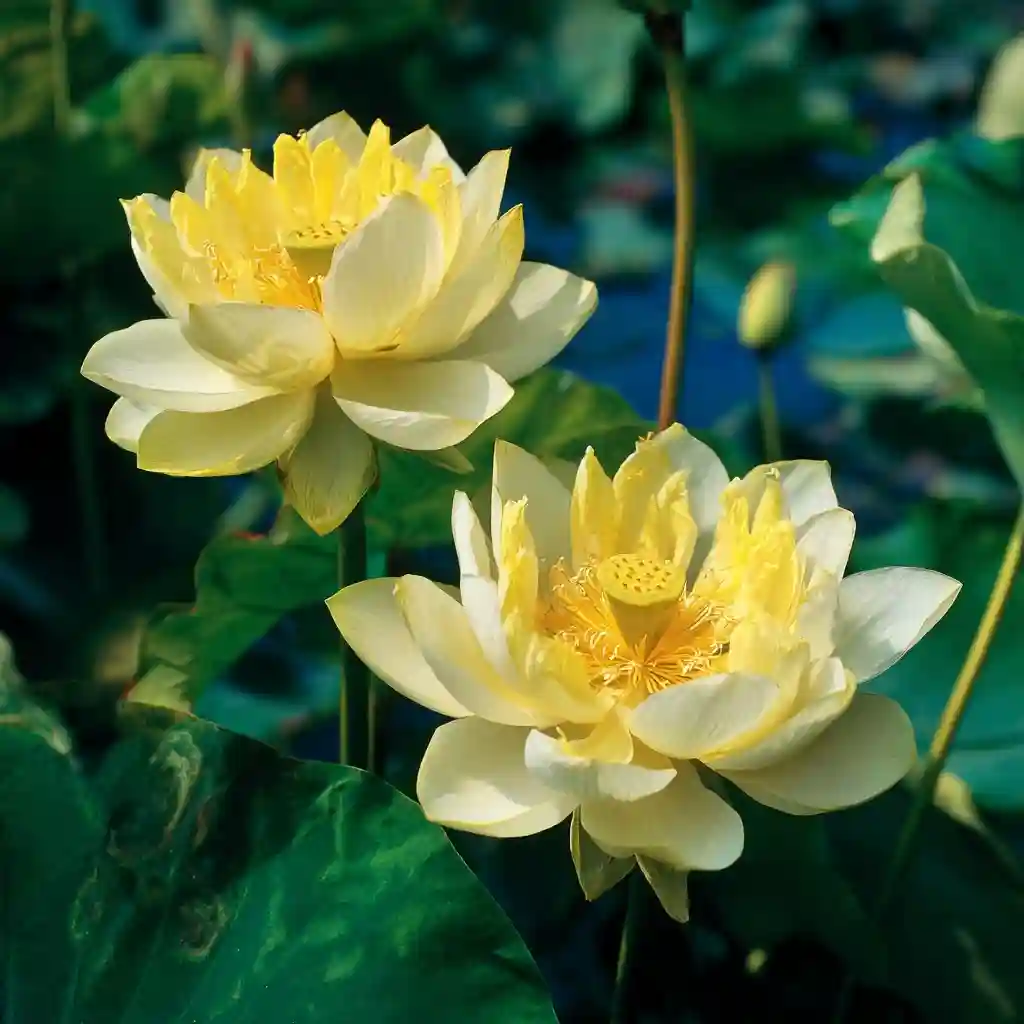

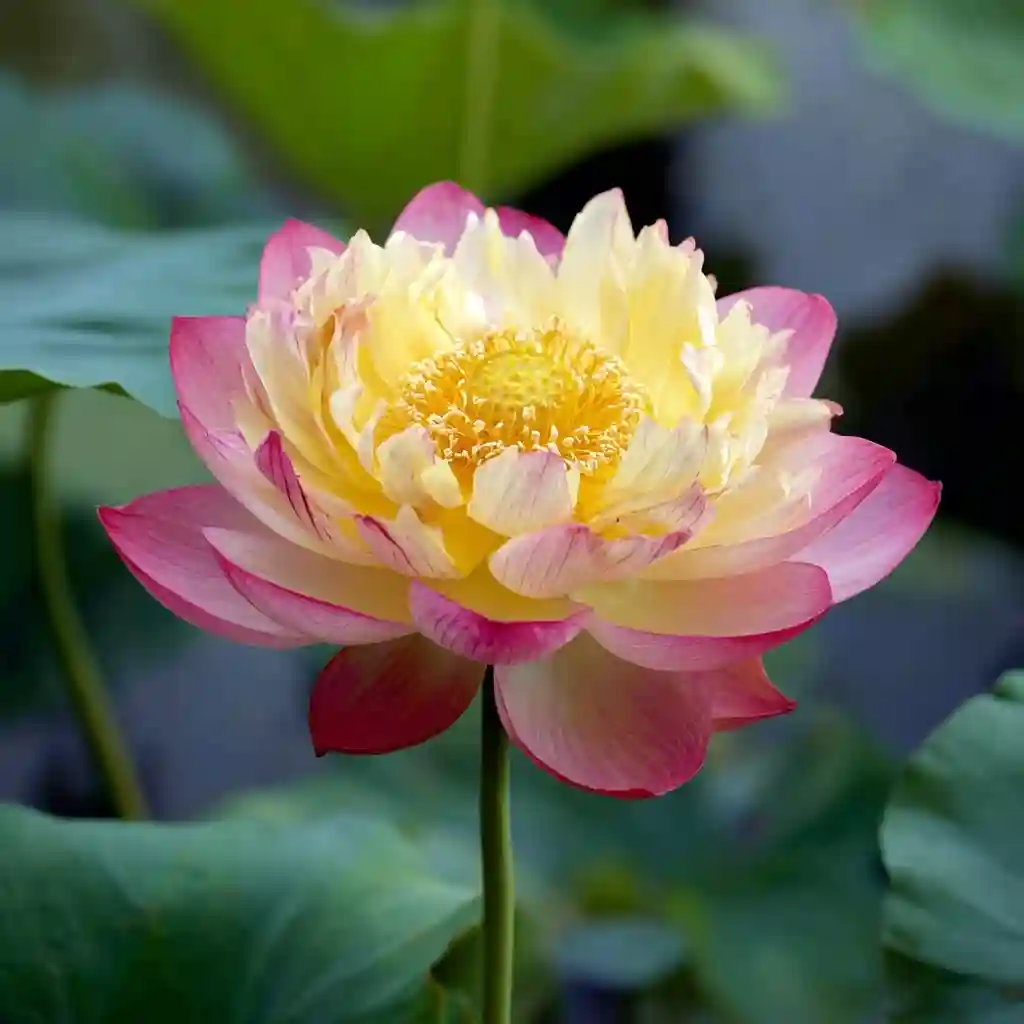
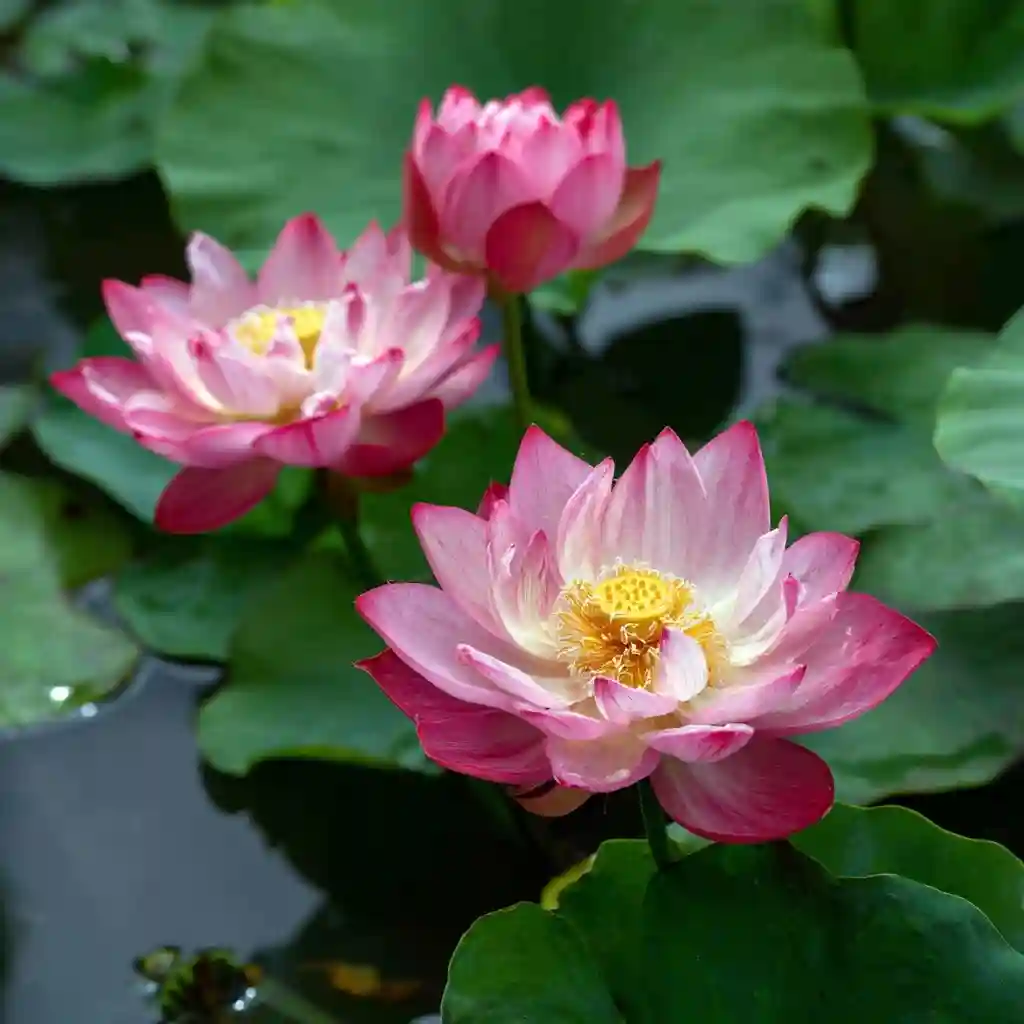
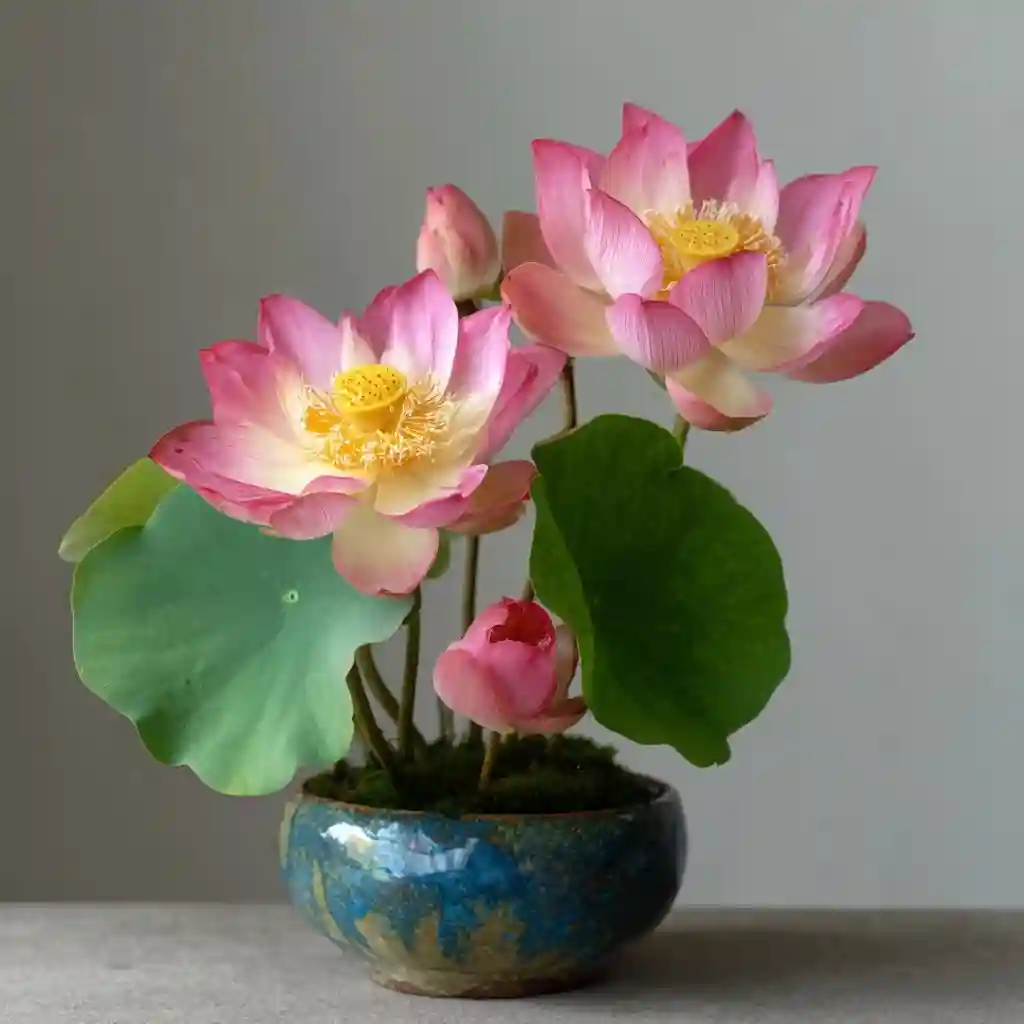
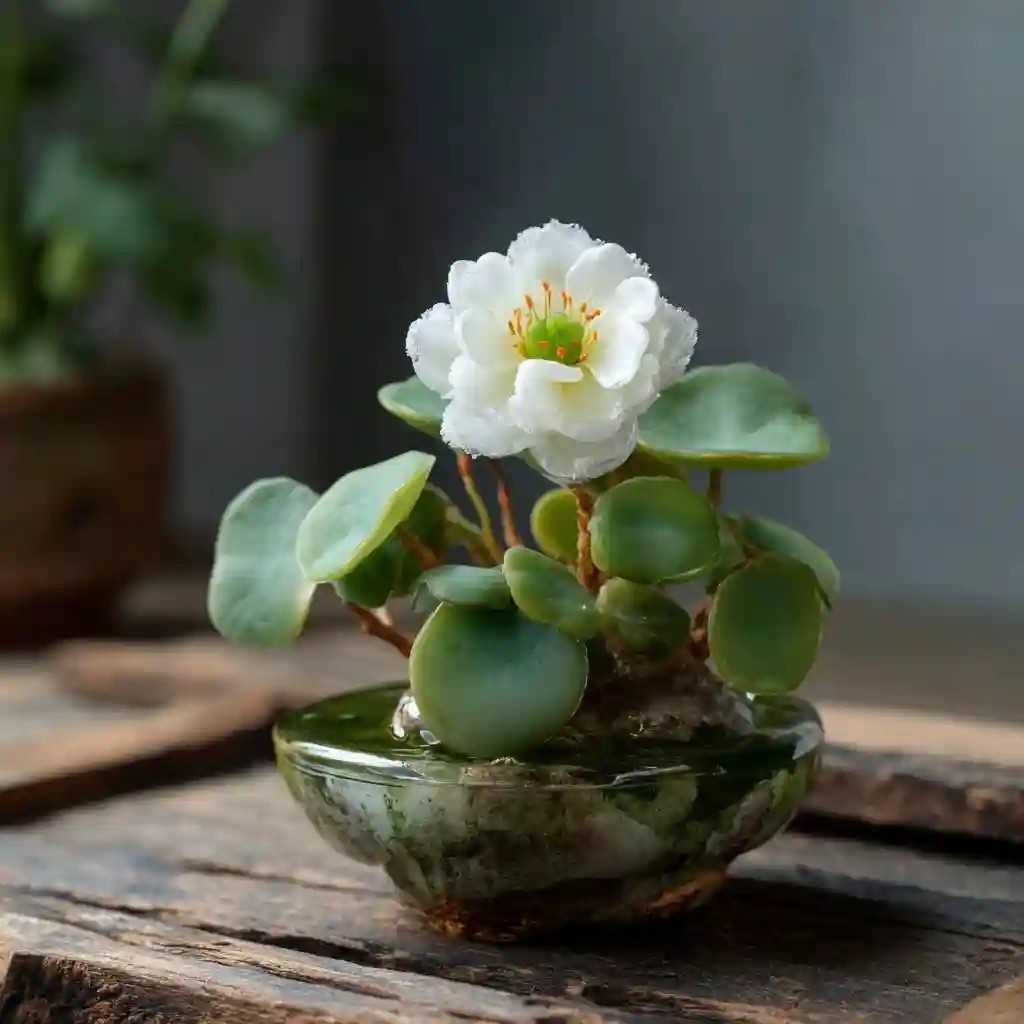

- Chongban Bayi Lian – Compact with double petals edged in pink; ideal for small containers.
- Ancient Capitol Red Palace – Tall with deep red blooms atop 4-foot stems.
- Green Jade of Qinhuai – Dainty double-white petals with a distinctive green center.
- Mrs. Perry D. Slocum – A chameleon of a flower, changing from pink to yellow to cream over time.
- Missouri – Exceptionally hardy with large pink flowers, perfect for colder climates.
- Pink Beauty – Classic lotus look with pale pink petals and bold central color.
- Sunburst – Fast-growing and vigorous, this yellow-blooming variety is known for its size and resilience.
Whether you’re after color, size, or symbolism, there’s a lotus that fits your space and climate.
Lotus Maintenance
Caring for lotus flowers doesn’t end once they’re planted. Regular maintenance ensures healthy growth, continuous blooming, and long-term vitality. From pruning to overwintering, here’s how to keep your lotus looking its best year-round.
✂️ A. Pruning
Dead or decaying leaves should be trimmed regularly to prevent fungal growth and encourage new shoots. Most heavy pruning should be done in late fall or winter, when the plant enters dormancy. Use clean shears and cut stalks near the base, just above the soil or water line.
🌱 B. Propagation
While seeds can be used, the most reliable method to propagate lotus flowers is by dividing rhizomes:
- In early spring, gently remove the plant from its container.
- Separate rhizomes, ensuring each has at least one healthy growing tip.
- Repot using rich, moist soil in a pot without drainage holes.
- Keep the tip of the rhizome facing upward and cover halfway with soil.
- Top with gravel to secure it, then slowly fill the pot with water.
- Place in a sunny spot, keeping water just above the rhizome tip.
🌿 C. Growing from Rhizomes
To grow lotus flowers from rhizomes, choose a plump, unblemished rhizome with a visible eye or growth point. Use a 5-gallon or larger container without drainage. Keep the rhizome horizontal in the soil and submerged under 2–4 inches of water. If you’re growing tall varieties, consider a support cage to prevent tipping as they mature.
💡 Avoid mesh baskets or containers with holes—lotus tubers can escape and become invasive.
❄️ D. Overwintering
In colder zones, overwintering is key to survival. Never allow water to freeze solid, or the rhizomes may die. Options include:
- Moving containers to a deeper section of the pond
- Installing circulating pumps to keep water moving
- Relocating pots indoors to a cool, moist storage space
- Checking soil regularly to maintain consistent moisture
Common Issues with Lotus Flowers
Even healthy lotus flowers can run into trouble from pests, disease, or environmental stress. Identifying and addressing issues early will help keep your plants vibrant and blooming all season long.
🐛 A. Pests & Diseases
Lotus flowers may attract:
- Spider mites – Look for tiny webs and speckled leaves.
- Aphids – Often cluster on new shoots and underside of leaves.
- Snails and slugs – Chew holes in leaves and can damage young plants.
- Fungal infections – Leaf spot and wilting are signs of fungal disease, often triggered by poor water circulation or dead debris.
Solutions:
- Remove dead foliage regularly
- Use organic pest treatments or horticultural oil
- Apply appropriate fungicides if fungal signs appear
- Use floating snail and slug traps or aquatic-safe baits
🌼 B. Blooming Problems
No flowers? Here are the most likely causes:
- Insufficient sunlight – Less than 6 hours per day = no blooms
- Overcrowded containers – Divide rhizomes every 1–2 years
- Dormancy timing – Newly planted lotus may not bloom their first year
Make sure your lotus flowers get full sun, fresh space, and seasonal rest to promote flowering.
⚠️ C. General Problems
- Rootbound plants – Repot every few years to prevent stunted growth
- Dry soil – Always keep soil moist, especially during hot weather
- Frozen roots – Use deep pots or overwinter properly to protect rhizomes
Lotus plants are resilient once established, but they thrive best with proactive care.
author:🪷 Conclusion
Lotus flowers offer more than just beauty—they’re symbols of serenity, resilience, and natural elegance. With proper sun, moist soil, and seasonal care, these aquatic perennials can thrive in both ponds and containers, providing lush foliage and breathtaking blooms year after year.
Whether you’re growing American varieties or sacred Asian types, starting from rhizomes or dividing mature plants, the process is both rewarding and manageable. Keep an eye on their needs, prune when necessary, and enjoy the soothing presence of lotus flowers in your garden oasis.
FAQ
Are lotus flowers difficult to grow?
Not at all. Once established, lotus flowers are surprisingly low-maintenance. The key is providing full sunlight, keeping their soil consistently wet, and protecting them from freezing in winter.
How long do lotus flowers bloom?
Each bloom typically lasts around three days, opening in the morning and closing at night. However, healthy plants will continue to produce new flowers throughout the summer.
Are lotus and water lilies the same plant?
No. Although they often grow in similar conditions, lotus flowers (Nelumbo spp.) grow on tall stalks above the water, while water lilies (Nymphaea spp.) float on the surface. Their leaves and flowers differ in shape and behavior.
Can I grow lotus flowers from seed?
Yes, but it’s a slower and less reliable method. Seeds need scarification (light sanding) to break dormancy and can take weeks to sprout. For quicker success, use rhizome division instead.
🌿 Love gardening inspiration? Follow me on Pinterest for bold plant ideas, tips, and seasonal color!
More Posts




